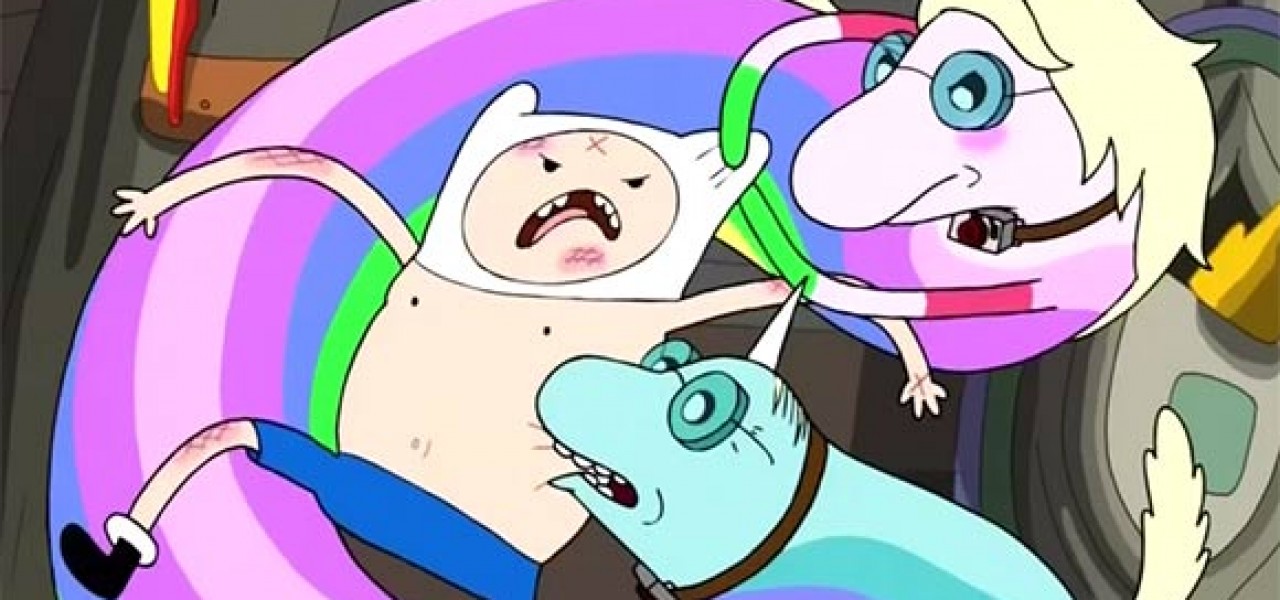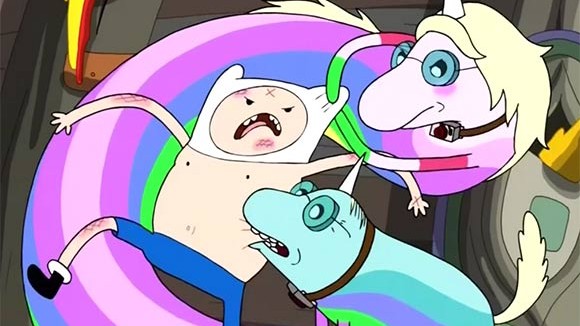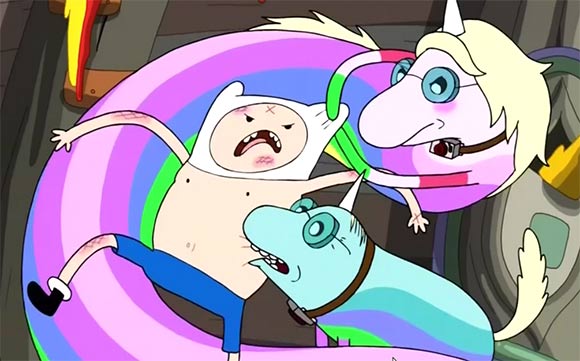

How ‘Adventure Time’ Revitalized Post-Apocalyptic Storytelling

There’s too much post-apocalyptic fiction around, in books and movies, TV and games. In the typical such story our world is broken via multimillion-dollar special effects, civilization burns like tissue thrown in a furnace, and the ragged survivors must fight each other and their environment before Tom Cruise saves them…or something like that. There might be religious messages; there definitely are overt or covert social messages. I’d toss the lot into a dumpster now, except for Adventure Time.
Adventure Time steps beyond the tropes and distortions of post-apocalyptic fiction and creates something altogether more honest, fun, and wholesome.
It’s a common fallacy that people automatically revert to looting and barbarism in a disaster. (Revert? Were cavemen nothing but looters? If so, The Flintstones is a big fat lie!) As soon as the apocalypse comes, everyone is supposed to bust into bondage-wear stores in order to cosplay their favorite Mad Max characters for the rest of their lives, and kill anyone who comes near. It’s simply not true, and lazy storytelling at that. Read Rebecca Solnit’s brilliant book A Paradise Built in Hell for how real people react in real disaster situations. The size of the disaster does not change human nature. Adventure Time, in presenting relatively stable societies that grow after the Mushroom War, might be more realistic than its adult counterparts.
The look of the post-apocalyptic world has become stereotyped: ruined cities, silent and buried, the survivors mutated and monstrous. Even Futurama gave us glimpses of that while poking mild fun. In Adventure Time, some mangled, broken debris gives us an indication that this was once our world, but very little survived the war, and what did was altered, not always for the worse. Magic was loosed on the world, which is hard to consider disastrous.
Even the scariest villain in the show, The Lich, introduced in the second season, is magical, more a result of rather than leftover from the pre-apocalyptic world, although its resemblance to the Horned King from Disney’s film The Black Cauldron (1985) nods to the bygone world of cartoons. (And Choose Goose, with his Ed Wynn-inspired voice, must surely be a descendant of Gandy.) Finn, though presented as (perhaps) the sole surviving human, looks rather strange, potentially alien under that hat or hood. When he first takes it off, and his blonde hair appears, there’s a sense of relief.
The accidental genius of Adventure Time is that the apocalypse was added as the show developed. The intentional genius was the decision to keep the apocalypse secondary. Compare that, for example, with the post-apocalyptic kids’ TV of my youth, which range from dystopian (Return to the Planet of the Apes) to quietly optimistic (Ark II). They were designed to be emotionally and structurally simple, and, in the case of Ark II, vaguely educational. Where Ark II succeeded, though it only ran one season, is that it was free of pessimism while still involved with post-apocalyptic societies.

Animated features run a wide gamut too, from the complexity in tone and story of Hayao Miyazaki’s Nausicaa and the Valley of the Wind (1984) to the more half-baked structure of Ralph Bakshi’s Wizards (1977). In poor post-apocalyptic fiction the backstory sets the tone, and characters are just flotsam bobbing in the current. In good post-apocalyptic storytelling, the characters work with the backstory yet remain able to make their own stories. Marceline the vampire, aside from being the coolest vampire on TV today, is an example. She transcends the standard tropes of vampirism, and is allowed to become an individual as a result.
Finn and Jake are not holy fools or inhabitants of a new Eden, both of which are tropes of other kinds, they’re just two kids living as best they can. Survival is not the travail presented by most post-apocalyptic fiction. It can even be fun. I like to think of Finn and Jake as the utopian counterparts to the title characters in Harlan Ellison’s famous story, “A Boy and his Dog” (1969); just two friends making do in a world more complicated than they know. There are monsters—what adventure would be complete without them? But there are friends as well.
And to those who say, “It’s just a kid’s show,” reflect on how every generation is shaped by the stories they hear as children: the Alice in Wonderland books, the Oz books, Seuss or Sendak. Adventure Time brings a little of its own distinct flavor, a 21st century addition to the canon, and a welcome one.

.png)